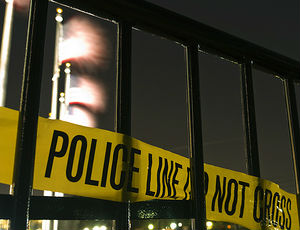In the eyes of John Skaggs, a homicide detective for the Los Angeles Police Department, once a person becomes a murder victim, they are no longer a gang member or a prostitute or whatever else bad they may have had in their past, they are somebody's child, and they deserve justice.
I would say that Ghettoside is ripped from the headlines, but alas, most of these murders never make the papers. They are young black men killed by other black men, and sometimes, it seems that only their relatives and the detectives "south of the 10" care. Jill Leovy's book covers a particular murder, assigned to John Skaggs, but it is also about South Central Los Angeles, the LAPD and the often frustrating relationship between the two. This book may not be a quick read, but you will be flipping the pages to get to the conclusion. In many ways, this is a sad book, about a sad and infuriating situation, but there are glimmers of hope, and a way forward.
In the decade before Ghettoside, there was a unit in the LAPD called Homicide Special. This was the elite unit, assigned to big cases. While Skaggs and his colleagues in South Central would have looked down their noses at them, this unit's stories are no less compelling. They include infiltrating a sexual slavery ring, a murder of a gangster's daughter that leads to Manhattan, and a case that has stymied the department for decades. The topper is the murder of Bonny Lee Bakley, allegedly by her famous actor husband, Robert Blake. A compulsive read for those who like a little more dish with their crime.
For true rich-and-famous drama in L.A., there's Labyrinth by Randall Sullivan. On the one hand, it has a lot in common with Ghettoside: the bloodletting on the streets of Los Angeles, mostly by young African American men. It's just that these men happen to be named Tupac and Biggie and Suge, and it works its way into the LAPD. With East Coast and West Coast and Crips and Bloods all facing off, the other similarity to Ghettoside is a devoted detective, in this case Russell Poole. He ends up uncovering all kinds of conspiracies and whitewash in the police department connected with the rivalry of Death Row Records and Bad Boy Records. Sullivan's journalistic telling makes this a quick, compelling read.
Of course, there's the one that really started the modern form of the genre: Homicide by David Simon. While taking place in Baltimore, at the time one of the deadliest cities in America, it is a classic. It follows a homicide unit from crime scenes to witness interviews to confrontations in "The Box" to clearance or failure. Issues of race come up because most of the cases involve minorities and there is just one African American detective in the unit. A detective's "perfect year" is ruined by a case that falls apart in court. The rookie gets the big case and has to stand or fall. Gripping, Homicide is the first time a writer is granted full access to a homicide unit and the results, well, you wouldn't be reading the other books here without it.



Add a comment to: L.A.’s Killing Streets